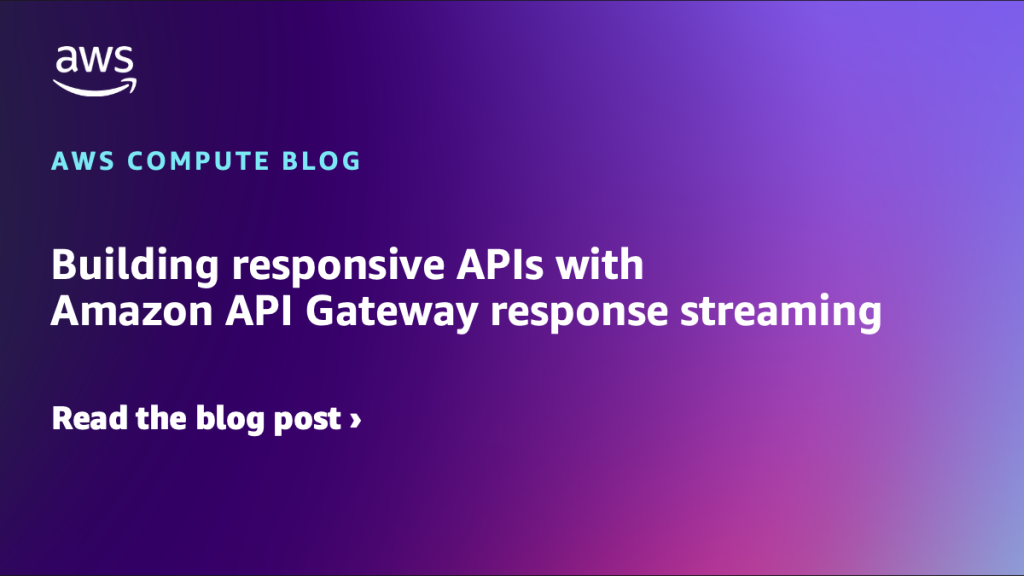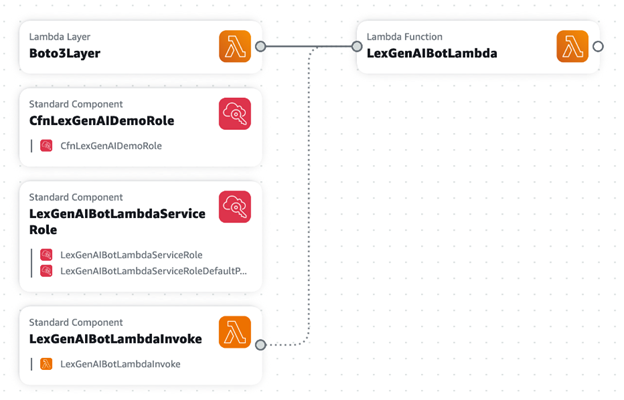AWS Compute Blog
Category: Front-End Web & Mobile
Building responsive APIs with Amazon API Gateway response streaming
Today, AWS announced support for response streaming in Amazon API Gateway to significantly improve the responsiveness of your REST APIs by progressively streaming response payloads back to the client. With this new capability, you can use streamed responses to enhance user experience when building LLM-driven applications (such as AI agents and chatbots), improve time-to-first-byte (TTFB) performance for web and mobile applications, stream large files, and perform long-running operations while reporting incremental progress using protocols such as server-sent events (SSE).
Orchestrating document processing with AWS AppSync Events and Amazon Bedrock
Many organizations implement intelligent document processing pipelines in order to extract meaningful insights from an increasing volume of unstructured content (such as insurance claims, loan applications and more). Traditionally, these pipelines require significant engineering efforts, as the implementation often involves using several machine learning (ML) models and orchestrating complex workflows. As organizations integrate these pipelines […]
Modernizing applications with AWS AppSync Events
In this post, you learn how to use AWS AppSync Events to modernize your applications by bridging synchronous and asynchronous communication patterns without requiring significant changes to your existing frontend code.
Serverless ICYMI 2025 Q1
Welcome to the 28th edition of the AWS Serverless ICYMI (in case you missed it) quarterly recap. At the end of a quarter, we share the most recent product launches, feature enhancements, blog posts, videos, live streams, and other interesting things that you might have missed! In case you missed our last ICYMI, check out […]
Serverless ICYMI Q4 2024
Welcome to the 27th edition of the AWS Serverless ICYMI (in case you missed it) quarterly recap. At the end of a quarter, we share the most recent product launches, feature enhancements, blog posts, webinars, live streams, and other interesting things that you might have missed! In case you missed our last ICYMI, check out […]
Introducing an enhanced in-console editing experience for AWS Lambda
AWS Lambda is introducing a new code editing experience in the AWS console based on the popular Code-OSS, Visual Studio Code Open Source code editor. This brings the familiar Visual Studio Code interface and many of the features directly into the Lambda console, allowing developers to use their preferred coding environment and tools in the cloud. […]
Serverless ICYMI Q2 2024
Welcome to the 26th edition of the AWS Serverless ICYMI (in case you missed it) quarterly recap. Every quarter, we share all the most recent product launches, feature enhancements, blog posts, webinars, live streams, and other interesting things that you might have missed! In case you missed our last ICYMI, check out what happened last […]
Build real-time applications with Amazon EventBridge and AWS AppSync
Directly invoking AWS AppSync GraphQL API targets from EventBridge simplifies and streamlines integration between these two services, ideal for notifying a variety of subscribers of data changes in event-driven workloads. You can also take advantage of other features available from the two services.
Using generative infrastructure as code with Application Composer
This post is written by Anna Spysz, Frontend Engineer, AWS Application Composer AWS Application Composer launched in the AWS Management Console one year ago, and has now expanded to the VS Code IDE as part of the AWS Toolkit. This includes access to a generative AI partner that helps you write infrastructure as code (IaC) […]
The serverless attendee’s guide to AWS re:Invent 2023
AWS re:Invent 2023 is fast approaching, bringing together tens of thousands of Builders in Las Vegas in November. However, even if you can’t attend in person, you can catch up with sessions on-demand. Breakout sessions are lecture-style 60-minute informative sessions presented by AWS experts, customers, or partners. These sessions cover beginner (100 level) topics to […]









